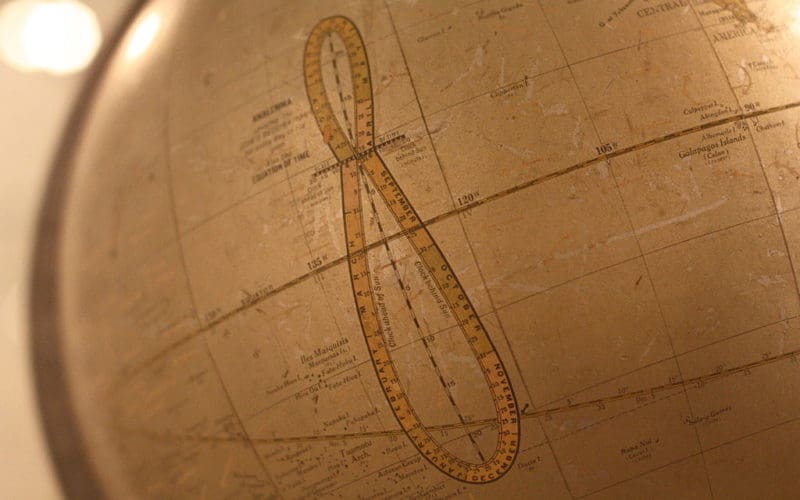Mention the phrase “equation of time,” and most people will probably think you are speaking of some obscure economic formula that has to do with life expectancy versus retirement income. But we celestial navigators we know better. Or do we?
The equation of time involves the relationship and difference between solar apparent time and mean solar time; which is the time on our watches. In order to reconcile the difference — no more than 16.4 minutes — the equation of time was formulated as a convenient means of connecting the two. The formula describing this relationship is as follows: Equation of time = mean solar time – apparent solar. What this formula represents simply is the relationship (difference) between apparent solar time and mean solar time at the observer’s position.
We all know that the length of a solar day is not actually 24 hours. But this time is inconsistent because the Earth’s speed in its orbit is not constant, the actual sun, is not always on the celestial equator, and the speed of rotation varies.
To make our lives easier, we have averaged out this motion and created something called the “mean sun,” which moves along the celestial equator at a speed of exactly 15 degrees per hour. And mean time, as measured by our watches is sometimes ahead or behind apparent solar time. This is the equation of time.
Except for high accuracy meridian passage sights or the taking of azimuths, where local apparent time is required, the equation of time is now relegated to a secondary place of importance for celestial navigators. In more than 30 years practicing celestial navigation, I have rarely consulted the table.
The Nautical Almanac, on the daily sun pages, lower right, lists the equation of time. Previously it had been marked with either a plus or a minus sign reflecting whether apparent time was fast or slow in relation to our watch or mean time. That symbology has been changed, so now a gray shadow over the numbers represents when apparent time is behind mean time or no coloring at all which indicates that apparent time is ahead of mean time.
By inspection one can see if the time of meridian passage is later than 1200, then we subtract the equation of time. The values are positive from April 15 to June 15 and from Sept. 1 to Dec. 24. They are negative from June 15 to Aug. 31 and from Dec. 25 to April 14. To see an example, go to the daily pages in the Nautical Almanac of April 13 through 15th. You can see the gray numbers marking the equation of time for the 13th is minus 32 seconds to the 15th when it becomes minus 2 seconds. Notice also how this affects the meridian passage time. On the next page the numbers are not shadowed and now we are in the range of the apparent solar time being ahead of the mean watch time.
The greatest value of the equation of time is on Nov. 3, when it is 16 minutes, 26 seconds, ahead of mean time. We are mostly concerned, if at all, with the time of the upper meridian passage. The sun transits the observer’s local meridian at local apparent noon. If the mean sun and average sun changed longitude at the same rate, local apparent noon would always be at 1200 LMT.
So, the equation of time represents the difference between apparent time of the sun and the mean time of our watches. To see examples, leaf through the daily pages of the Nautical Almanac and see how the equation of time changes over the course of the year. A graphic interpretation of this equation of time can be found on many globes, looking like a figure 8 and referred to as an analemma. But that is for another time.

